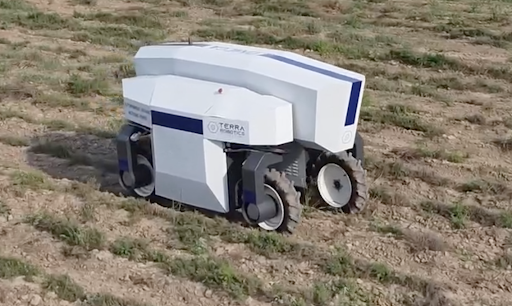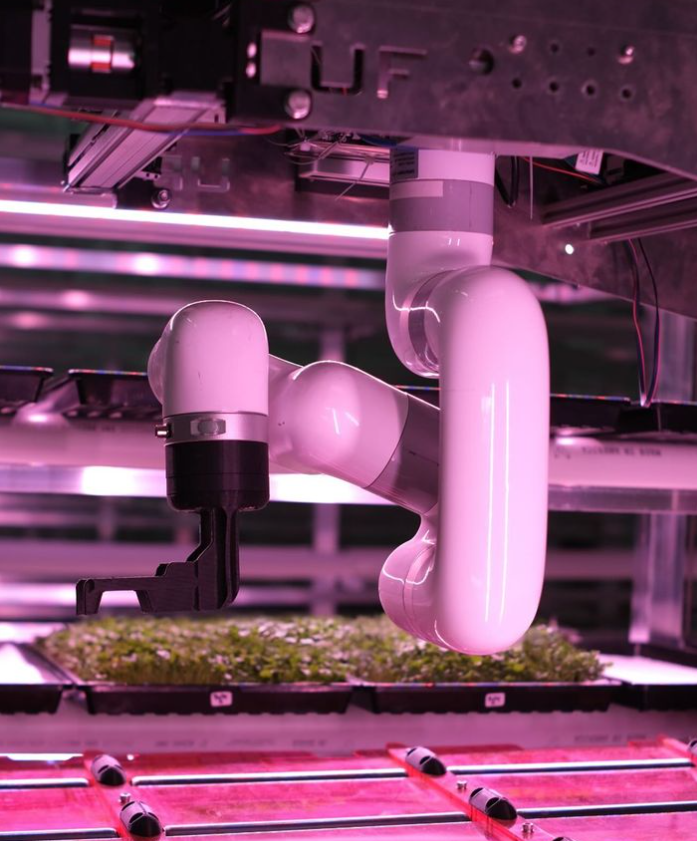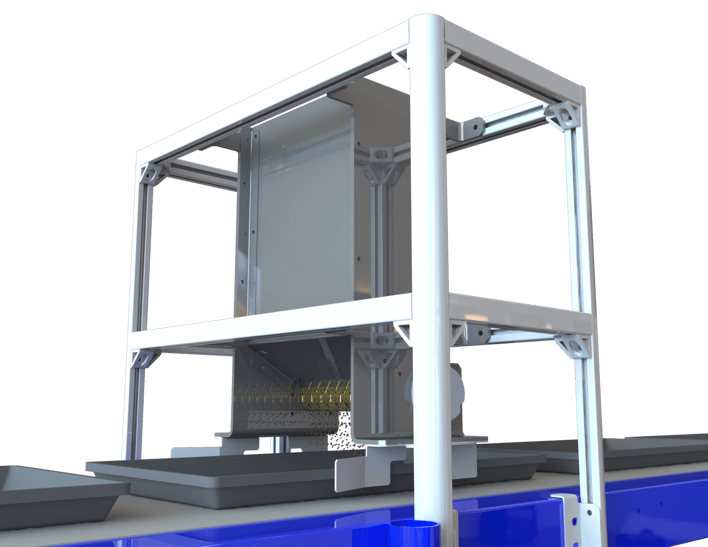Apr 14, 2024
Exploring the Future of Agriculture: A Deep Dive into Robots

The Role of Robots in Agriculture
The mechanization of agriculture during the industrial revolution and later in the mid-20th century Green Revolution dramatically shifted the capabilities of an individual farmer and how much land they could manage. From the cotton gin to tractors and combines, mechanization plays a major role in the abundant food systems we benefit from today. In outdoor agriculture nearly every process in growing is done using highly mechanized systems and increasingly are upgrading to more intelligent robotic systems. Robotics, broadly defined, involves the use of machines capable of performing a wide variety of tasks and actions automatically. This includes machines that navigate spaces and manipulate objects often using sensors, actuators and computational systems that process the information and act on it.
These machines are classified based on their operational roles, including but not limited to:
- Seeding: Machines that automate the sowing of seeds, ensuring optimal depth and spacing.
- Transplanting: Machines that move plants from a dense nursery growth stage to a more spread out growth stage.
- Harvesting: Machines designed for efficiently cutting plants from their roots. Robots equipped with sensors and end-effectors to identify and pick ripe produce.
- Weeding and Pest Control: Units that use precision application of herbicides or mechanical methods to manage weeds and pests.
- Monitoring and Scouting: Drones or ground vehicles that gather data on crop health, moisture levels, and other critical parameters.
The global agricultural robotics market is projected to grow significantly, from $13.4 billion in 2023 to an estimated $86.5 billion by 2033, indicating a compound annual growth rate of 20.5% over the forecast period. This growth is driven by the increasing demand for automation in agriculture, rising labor costs, and the need to meet escalating food production demands. The integration of artificial intelligence, machine learning, and big data analytics in agricultural robots has led to the development of more sophisticated and intelligent farming solutions
Definition and types of agricultural robots
Today in agriculture, various robots are used to do everything from picking fruit, to zapping weeds with high power lasers and driving tractors autonomously. Autonomous Mobile Robots (AMRs) is a class of robots that as the name suggests travel through spaces autonomously to complete their various tasks. Within this category many different types of sensors and data are used to navigate farms including cameras, GPS, lidar, magnetic tape and more. Agricultural robots are generally used to autonomously gather information about crops and environmental conditions as well as completing tasks necessary to bring crops from seed to harvest.
Advantages of using robots in farming
From planting to harvesting, the precision you can achieve with machines and robots creates consistency, uniformity, predictability and reduces waste in farming. The true value of this is the ability to optimize plant growth, reduce waste and deliver a consistent product. Precision fertilization can reduce costs and minimize damage to local ecosystems, while precision seeding and harvesting can significantly reduce labor costs. Machines can complete tasks far more quickly than a human and can increase food safety by reducing the amount of contact points with humans that can result in contamination. Especially with the changing climate, the ability of robots to make intelligent decisions based on the data can help farmers optimize their crop yields while minimizing the resources they use to achieve these results. The agricultural labor force in many countries is dwindling and in many cases farmers simply can’t harvest their entire crop, leaving much to rot in the fields. The ability for farmers to get their job done with less reliance on labor is paramount to their success.
Applications of Robots in Vertical Farming
While vertical farming offers many sustainability benefits, it has struggled to create profitable businesses in large part due to high labor requirements. Many companies are actively mechanizing and roboticizing their farms to streamline their operations. In every case a balance needs to be found between the cost of automation and labor.
Rooted Robotics
One startup actively working on this problem is Rooted Robotics. Based in Boulder, Colorado, the team includes talented engineers and operators with over a decade of experience in vertical farming from massive to small operations. They started their journey with the goal of opening their own farm with automation of every process from seed to harvest and decided they could better serve the industry by offering their solutions to the industry. Their mission is to accelerate humanity’s transition to controlled environment agriculture by providing affordable AI integrated automation solutions for the industry.

Robotic Planting and Seeding:
Planting or seeding in vertical farming generally breaks down into two categories, precision seeding and seed casting. Precision seeding is the most common and applies to whole head crops, and most nursery crops where the farmer is growing the plants out to a more mature age. Seed casting is generally used for microgreens and baby greens where a larger density of seeds is required and less precision is needed. In both cases planting seeds by hand is very inefficient and slow, which is why most farms automate these processes. In microgreen operations uneven seed distribution can also cause low yields due to plants crowding each other out. Rooted Robotics has developed a low cost automated seed caster for microgreens that they recently deployed at a farm in Denver and will be releasing the product very soon. They plan on creating a version of their machine that can be used for both precision seeding and seed casting in the near future.

Robotic Harvesting:
In the vertical farming industry, harvesting machines are another of the most common types of automation you will see in almost every farm. These machines cut leafy greens from their stems and roots in preparation for packaging. In most cases labor is required to load conveyors with trays of plants to be cut and often a significant amount of the product doesn’t make it into the final packaging. It was with this in mind that Rooted Robotics has developed a harvester that can be used for microgreens, baby green and whole head crops in a way that significantly reduces loss. They are developing a lower cost version for small farmers as well as a highly automated version for larger scale farms. In addition to leafy greens harvesting, many vertical farms growing strawberries and other fruit are actively developing robotics to access ripeness and pick the fruit at the optimal time. The biggest challenge here is training the robotic systems using computer vision and machine learning to locate and pick the very delicate fruits without smashing them.
Robotic harvesting systems in vertical farming environments are designed for:
Efficiency and Speed: These robots can identify ripe fruits and vegetables and harvest them at a speed unattainable by human workers. This rapid response to ripeness ensures that produce is collected at its nutritional and taste peak, directly contributing to the quality of the final product.
Reduction in Post-Harvest Losses: Traditional manual harvesting is often associated with a certain degree of product damage, leading to post-harvest losses. Robots, equipped with gentle handling mechanisms, can significantly reduce these losses, ensuring that a higher percentage of harvested produce reaches the consumer in excellent condition.
Terra Robotics, autonomous weeding
Terra Robotics is a Greek startup that provides advanced solutions for autonomous weeding. The main project of the company is the OMEGA., an autonomous laser weeding robot designed to achieve autonomous and organic weed control, thereby eliminating the need for chemical herbicides.
At the core of this solution is an advanced robot featuring complete electric propulsion and autonomous navigation capabilities within crop fields. This versatile robot can accommodate various agricultural attachments, seamlessly integrating with existing market tools through a hydraulic system akin to those found in conventional agricultural tractors.
Complementing the robotic platform is the laser weeder system, representing a cutting-edge advancement in weed control technology. This system delivers a precisely focused laser beam to targeted weed locations, inducing severe damage to the weeds and gradually weakening them until eradication is achieved.
In summary, this project represents a pioneering initiative in agricultural technology, offering a sophisticated disruptive solution for autonomous and organic weed control for conventional & organic crops.
Awentia Agritech
Awentia is an Italian Deep Tech startup that transforms images into structured data of great value for agriculture and industry in general. Their technology, Awentia Agritech, is used to monitor the rows of a vineyard, keeping an eye on the health of the plants and detecting in advance problems or diseases. Awentia's technology is suited for applications in the most diverse sectors, including agriculture, where reducing waste, improving efficiency and increasing productivity is essential.
Challenges and Limitations of Robotic Technologies in Agriculture:
The high initial investment in robotics and camera systems can be a barrier for small-scale farmers. Rooted Robotics is working on scalable solutions to address this challenge.
Technical challenges include developing robots that can operate in diverse farming environments. Continuous innovation is key to overcoming these hurdles.
While automation can displace traditional jobs, Rooted Robotics is committed to re-skilling and up-skilling workers, emphasizing the creation of high-tech jobs in the agricultural sector.
Conclusion
In conclusion, the role of robots in agriculture, particularly in vertical farming, is transformative. Through enhanced precision, efficiency, and reduced labor requirements, robotic technologies are setting new standards for productivity and sustainability in agriculture. As we continue to explore and expand the capabilities of these machines, the potential for further advancements in food production is vast, promising a future where agriculture is more productive, less labor-intensive, and environmentally sustainable.
🤖 Ready to Future-Proof Your Farm?
Whether you’re running a vertical farm or managing open-field production, robotics can unlock new levels of efficiency, profitability, and sustainability. From reducing labor costs to boosting yields with precision farming, the future of agriculture is automated—and it’s closer than you think.
👉 Book a Consultation with Agritecture and discover the right automation strategy to transform your operation.
